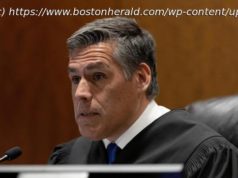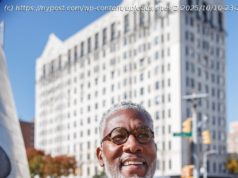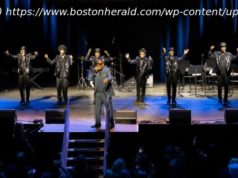A drone attack that failed to kill President Nicolás Maduro of Venezuela unfolded on live TV and in front of many witnesses: “It was like, bang, I had never heard a sound like that in my life.”
CARACAS, Venezuela — In the presidential box stood the small cadre who run the country: a loyal general who was now the interior minister, the chief judge of the Supreme Court and Nicolás Maduro, the president, who looked down at a parade of national guard troops.
Mr. Maduro, bedecked for the ceremony with the gold chain and tricolor sash of his office, was ending his speech Saturday afternoon on the topic that is top of mind for every Venezuelan: the ravaged economy, which has left much of the population desperate for food, emptied the hospitals of medicine and driven hundreds of thousands to leave the country .
Before a loyal audience, the president tried to sound an optimistic tone on improvements to come, despite Venezuela’s dire condition.
“We’re going to bet on good outcomes for this country. T he hour has arrived for economic recovery,” Mr. Maduro said.
Then, an explosion erupted.
One general ducked. Cilia Flores, the first lady, stumbled and reached to clutch the arm of the Supreme Court judge beside her. Security officials rushed the platform and surrounded the president with large black shields.
All looked to the sky in fear.
Mr. Maduro was under attack in what the government said was an assassination attempt, the first such known use of drones against a head of state.
The chaotic scene was the most striking evidence of unrest in Venezuela since the violent protests of last summer that were crushed by security forces, with more than 100 killed and over 3,000 arrested. Since the government crackdown on those demonstrations, and the re-election of Mr. Maduro in May in a vote widely described as rigged, the opposition has largely been quieted.
On Sunday, Néstor Reverol, the country’s interior minister, said that “six terrorists and hit men” had been arrested, and that one had attacked the government before.
The ceremony was being broadcast on live television, and the camera, instead of going dark when the attack began, panned out over the crowd of assembled troops. In a close-up, a flash of fear came across the face of a young soldier in a red beret. “Let’s go to the right!” someone yelled in the background.
Then came a second blast. Suddenly, hundreds of national guardsmen, standing in formation for the parade, abandoned the president, scrambling in a panic to find safety.
Carlos Julio Rojas, an activist who was attending a small protest nearby, said he saw a stampede.
“I hear screams and I saw National Guardsmen with long guns on the streets, running like crazy. They even pushed an old lady who was trying to run,” he said. “Imagine this: Our military are supposed to protect us, and then you see them running like that.”
Mr. Maduro emerged from the attack unscathed, appearing on television that evening to declare the assassination attempt a failure. But he offered little real certainty as to who might have tried to kill him. While he blamed right-wing elements in Venezuela and the Colombian government, he offered no evidence to support that claim.
A communiqué, attributed to a shadowy group of rogue Venezuelan military men, appeared on Twitter after the attack, with vague statements denouncing the government, leading some to think that the group was accepting responsibility.
And some in Venezuela turned the conspiracy back on Mr. Maduro, suggesting that his government might have had some hand in the attack to fuel a further crackdown against opponents. No special security measures were visible on Sunday around the site of the attack, raising suspicions of how serious the government viewed it and the continuing investigation.
“The idea is if this was a self-inflicted attack — are they going to take advantage now to double down on a repressive wave?” said Nicmer Evans, a political scientist who broke from Mr. Maduro’s party and has run in opposition campaigns.
At 5:41 p.m., Mr. Maduro was at the end of a ceremony commemorating the 81st anniversary of the National Guard, the troops that were on the front lines last year in his deadly crackdown against protesters.
José Gregorio Chacín, who lives in front of the site of the explosion, was sitting at home near Bolívar Avenue, watching the parade out his window.
“We always watch all of the events,” he said on Sunday. “I saw light and heard an explosion. It was like, bang, I had never heard a sound like that in my life.”
His first instinct was to call his wife, who was out with his daughter. “Maybe something happened to Maduro,” he thought as he saw streams of troops fleeing the parade.
As news of the attack spread, television crews sped to the scene.
“We are going right now around Bolívar Avenue. You can see the images of the police and the national guard officials,” said Neidy Freytes, a reporter broadcasting live on the Venezuelan channel VivoPlay, with the camera angled from the back seat of the car.
Then came a knock on the window. Ms. Freytes said in an interview that National Guard troops had ordered her equipment shut off and sat on her before arresting her.
Witnesses and news reports said smoke could be seen billowing from a building nearby, which seemed to have caught fire at the same time of the attack. While firefighters told reporters that the cause was a gas tank explosion, witnesses said the fire had been caused by a drone that exploded when it fell.
“The flying thing was going to fall on the street, and then it collided with the building,” said a young employee of a store in the area, who asked not to be named, fearing being caught in the government investigation.
For more than an hour after the attack, the country waited, with only rumors on social media filling in the gaps of what had just been witnessed. What was the explosion? And had the president, who suddenly disappeared from television screens, survived the attack?
He had, said Jorge Rodríguez, the communication minister, who appeared before reporters just after 7 p.m. to say that Mr. Maduro had personally asked him to “calm down the country.”
What had occurred, the minister said, was an attempt to kill the president with “various drone-like flying devices,” and while it had been unsuccessful, seven national guardsmen had been injured.
Mr. Rodríguez praised the troops, saying, “The formation of the National Guard troops stayed in place.” It seemed to contradict the disorderly retreat the country had just seen.
Later in the evening, a new mystery emerged on Twitter: copies of a communiqué attributed to a shadowy group calling itself Operation Phoenix.
The group, formed by discontented military men, had been led by a rogue pilot who commandeered a helicopter last year and launched stun grenades at the Supreme Court building.






